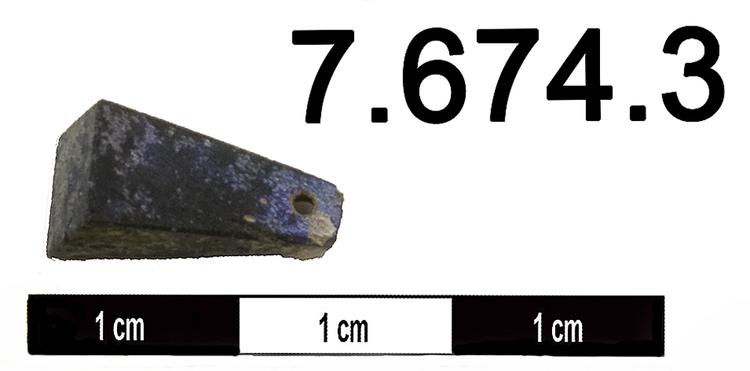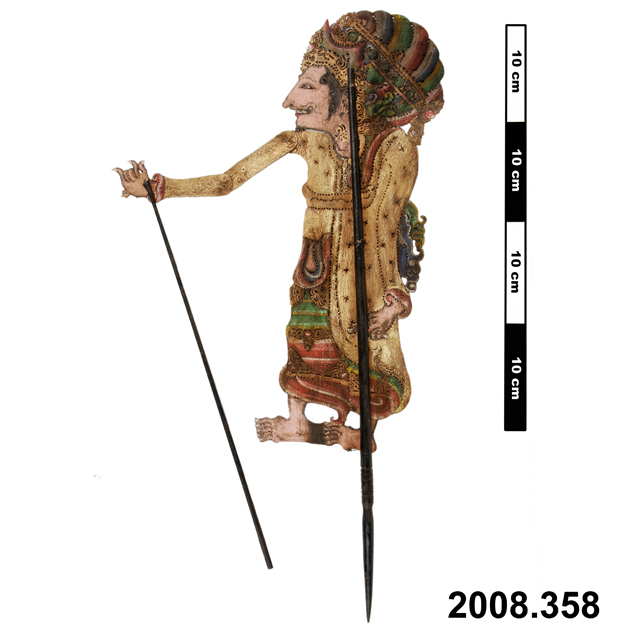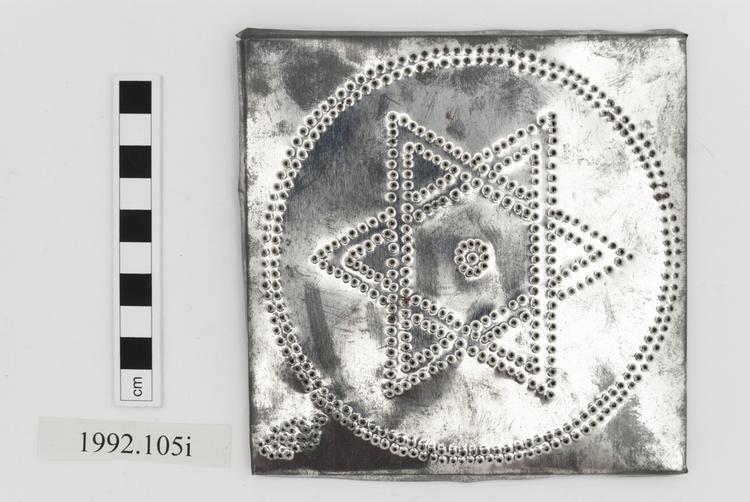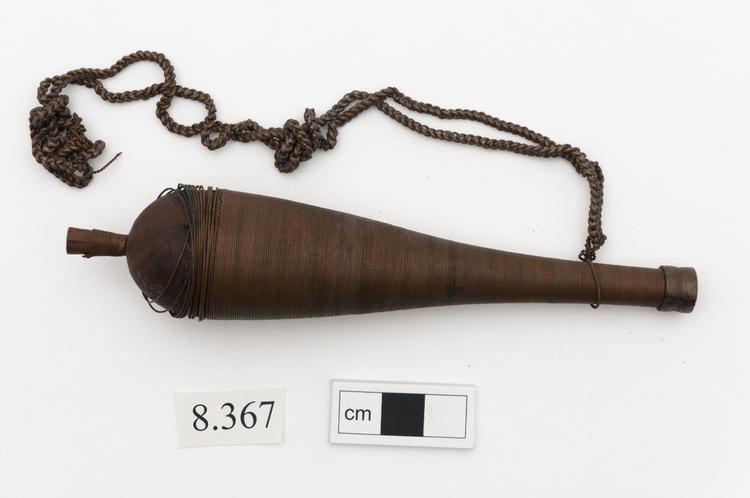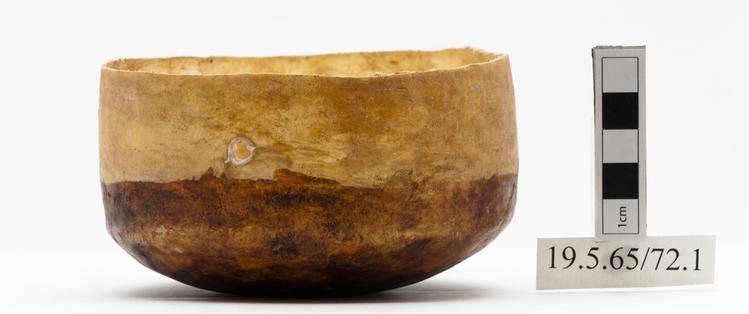
Base of a camel skin container (possibly udder skin) in two halves, which has been converted into a table lamp. The bottom of the base has been pigmented brown. A small round hole has been made in the side for insertion of an electrical cable.
Conical skin containers such as this one were usually made from either cow or camel skin (but not udder skin). The two main centres of production are Agadez in Niger and Timbuktu in Mali. The containers are called 'batta' or 'bata' (plural 'batochi') in Hausa, and 'elbettan' or 'albattan' and 'tahattint' in Tamacheq. Tuareg women use them as containers for small personal items, such as make-up, perfume, incense, jewellery, medicine, or sewing kits. They are also made for the tourist market. Production: pieces of rawhide are soaked in water for several days until they are gelatinous. The pieces are then formed over clay moulds and left to dry. Long strips of wax are applied to the dry skin in geometric patterns and the boxes are subsequently dyed in a brown-red liquid derived from millet stalks. The areas covered by the wax remain undyed. Once completely dry, the wax strips are removed and the clay mould is broken and discarded.



